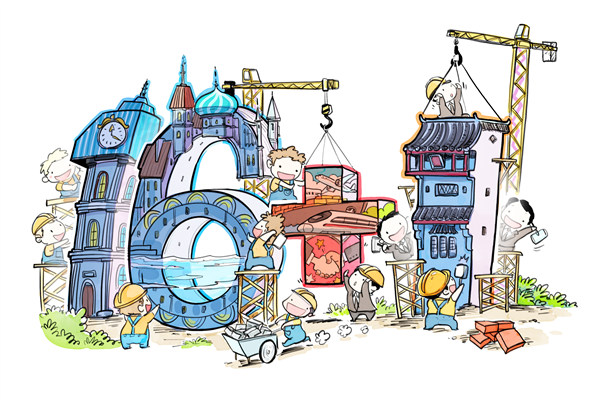
[Cai Meng/China Daily]
Editor’s Note: Premier Li Keqiang’s visit to Hungary and participation in the Sixth China-Central and Eastern Europe Leaders’ Meeting on Nov 26-29 are important diplomatic moves after the 19th National Congress of the Communist Party of China, which will promote China-CEE cooperation in the framework of “16+1” mechanism.
Transcontinental sharing of goals
Katarzyna Anna Nawrot
The Belt and Road Initiative as a transcontinental framework of cooperation couldn’t be a better platform for collaboration for shared goals. The 16+1 mechanism being a part of that framework should thus extend the focus from individual sites and mutual economic benefits of the stakeholders involved to broader and more useful collaboration.
Possible fields might include international security, environmental issues, the challenges of urbanization, including energy and transportation, communications, sanitation and water supply. The growing urban inequality, poverty and exclusion in fast growing agglomeration, too, needs to be addressed. Better understanding of different cultures seems crucial.
And the future of work and artificial intelligence are another area for serious discussions and solutions.
The establishment of a research network of scientific institutions from Central and Eastern Europe and China is the result of long-term efforts and the work of researchers from the partner institutions. It provides opportunities for scientific and research cooperation, interdisciplinary projects, exchanges of scientists and students.
Also, and perhaps more importantly, it is a platform for dialogue and collaboration on global issues and joint research projects in fields such as economics, management, medicine, commodity science, construction, geology, electro-mechanics, telecommunications, biology, chemistry and meteorology. This is a first step toward establishing broader cooperation among universities and academic institutions from China and the Central and Eastern European countries.
Academic cooperation is a crucial pillar of the relations between China and CEE countries in the context of the Belt and Road Initiative. There is no better way to build trust and understanding than people-to-people contact. Besides, closer cooperation at the academic level should enable the flow of ideas, values, innovations and innovative thoughts to benefit from synergies, build mutual understanding between nations and to bring regions closer, concentrating on similarities rather than obstacles and impediments, contributing to the wealth of nations, civilization progress and harmonious global community.
The author is an assistant professor at Poznan University of Economics and a member of the Committee of Future Studies, Polish Academy of Sciences.
